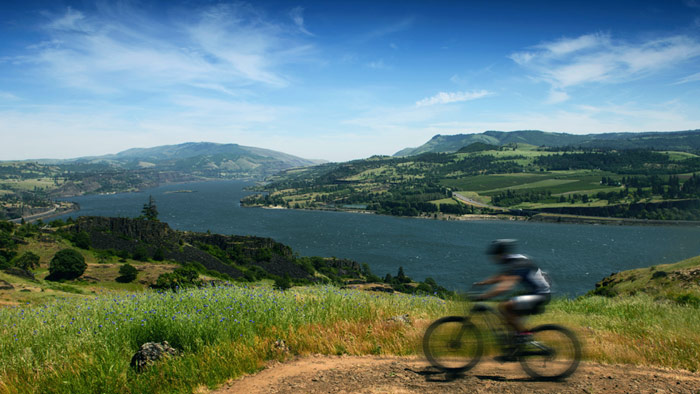For many, training for a 50 mile off road race may seem like a daunting task. Where do you start? What workouts should you do? What should you do to prepare? Or maybe you’ve completed the distance before and your goal is to take your performance to the next level. 50-mile races require a combination of endurance and speed and should be approached differently than cross country races or longer endurance events. Let’s take a detailed look at the things I think you should focus on before you arrive at the start line.
You know that you have to ride your bike, but what are the things that you can do to make sure that there are no surprises come race day? I like to start by thinking about how to best prepare for the event. Attention to the details can add up to equal huge success.
Spend Time on Your Mountain Bike
This may seem like a no-brainer, but often I see mountain bikers do most of their training on the road or the trainer. While these are great supplemental tools, and they each have their value, there’s no replacing quality time spent riding off road. Spending time on your mountain bike develops both the technical riding skills as well as the upper body and core strength that’s specific to mountain biking.
Tempo Rides
Tempo rides are an excellent way to develop your aerobic capacity without the required “pain” of threshold training. Tempo pace should feel fast, but not unsustainable. If you’re training with power or heart rate tempo rides occur around zone 3, and if you’re using RPE then it’s a touch higher than conversational pace. I like to schedule longer tempo periods within a long endurance (zone 2) ride. This also helps to break up the monotony and keep the ride interesting. A typical tempo ride might go something like; After 1 hour in zone 2 perform 45 minutes in zone 3, and finish in zone 2 for a total ride time of 3 hours.
Interval Work
While 50 miles is no doubt a lot of ground to cover and requires endurance, it’s also short enough that you’ll want to develop some top end speed, especially if you’d like to be competitive at the distance. Intervals are designed to be short and are performed at or above your lactate threshold. These short bursts will train your body to respond to race pace efforts, short climbs, and provide overall top end fitness gains. Traditionally interval workouts are shorter in overall duration and are designed to push your anaerobic capacity. Great go-to workouts are 20×30 second max effort sprints with 1-minute recovery between, or 10×1 minute in zone 5 with 2 minutes recovery.
Endurance Rides
So after you’ve included both tempo and interval workouts into your training you’ll need to prepare your body to cover the distance. I like to prescribe both a mix of volume and time on the bike to prepare my athletes for these races. Several 5-6 hour rides before the race help prepare you physically and mentally for the event. I also like to stack several longer efforts over 2-3 days to prepare the body for the stress of endurance racing. These rides are also the perfect opportunity to focus on climbing and simulating the elevation gain of your race. A mix of both long sustained climbs and short “punchy” hills are a good way to prepare for the inevitable elevation changes. Plan a route that will allow you to cover both the distance and the elevation gain in a single ride. These rides should be performed below zone 3 with the focus being on time in the saddle, good form, and good nutrition.
Strength Training
I believe that strength training is important for the development of all cyclists, however for mountain bikers it’s critical. The terrain and bike handling involved in the completion of an endurance event takes not only strong legs, but also core, and upper body. Strong shoulders, arms, and back help to properly support you while riding. A strong core, hips, and low-back help you maintain proper form when you get fatigued and help deliver more power to the pedals. I recommend at least one day of dedicated strength work each week in preparation for your race.
Dial in Your Nutrition
One of the biggest challenges with endurance races is figuring out what type of nutrition works for you since everyone responds differently to various types of supplements. Your long training rides serve as the perfect test environment to dial in your nutrition. Experiment with different supplements to figure out what’s best for you as well as what’s easiest to handle while riding. Also included in your planning should be looking at any aid stations that may be available along the race course, and deciding if you’re going to take advantage of them. Figuring out both the frequency and quantity necessary to supply your energy needs before the event is critical in ensuring you’ll have a successful race.
Pre-Ride the Course
Many races offer a pre-ride several weeks or months before the actual event to allow riders the chance to familiarize themselves with the course. If possible I highly recommend that you take advantage of this opportunity. Not only does this give you a better idea of how to physically prepare for the race, it can also be a huge mental advantage. Knowing what to expect and when to expect it can be one of the best tools in an endurance athlete’s arsenal.
After you’ve covered all of your bases outside of bike specific training you’ll of course need to be prepared physically to tackle the distance. The 50-mile race requires a combination of several specific workouts to achieve the optimal blend of strength, power, and endurance.
50 miles is the perfect distance for those looking to get into endurance racing or for the seasoned XC racer looking to push themselves over longer distances. By implementing these key workouts and thinking through a few of the details you’ll be more than prepared for your next 50 miler.


